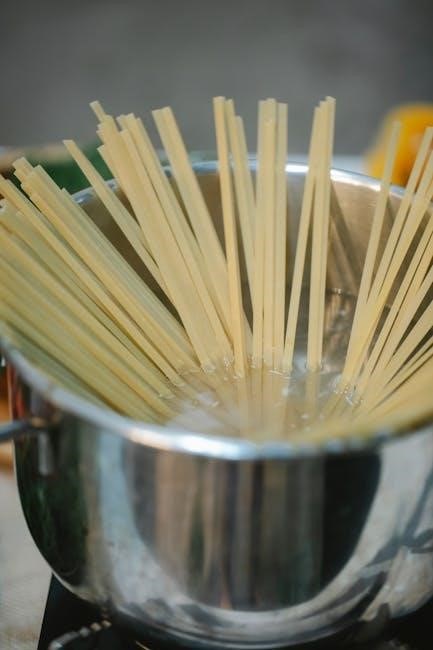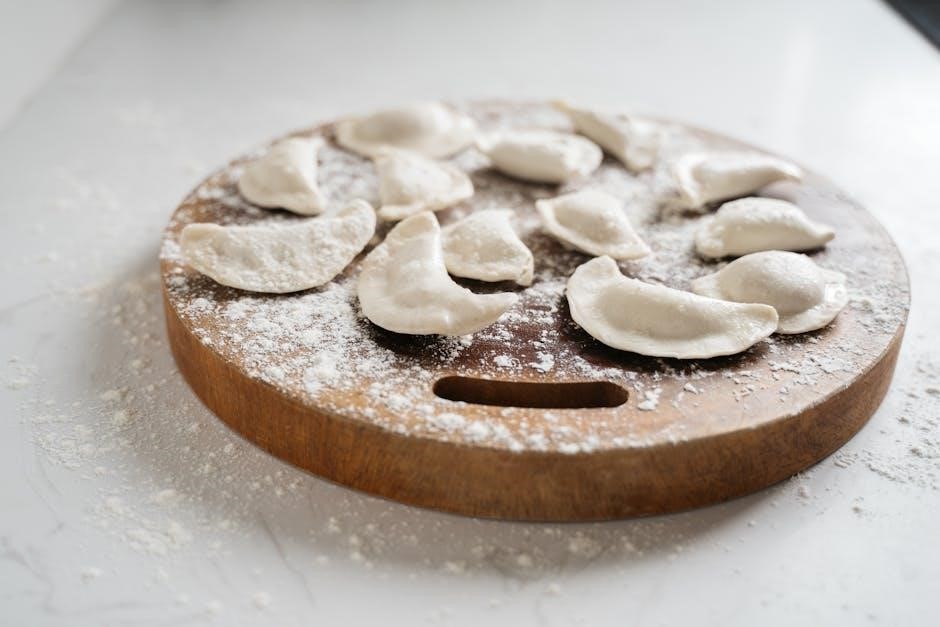Boil-and-bite mouthguards are a popular choice for athletes, offering better protection than pre-molded options and greater affordability than custom-made alternatives. These guards are designed to be softened in boiling water, allowing users to shape them around their teeth for a secure, personalized fit. Proper fitting is essential for effective protection and comfort during sports or high-impact activities.
What Are Boil-and-Bite Mouthguards?
Boil-and-bite mouthguards are protective oral devices designed to be softened in boiling water, allowing them to mold to the user’s teeth for a customized fit. Made from thermoplastic material, they become pliable when heated, enabling precise shaping around the teeth and gums. This process provides better protection and comfort compared to generic, non-moldable mouthguards. They are commonly used in sports and other activities to prevent dental injuries, offering a balance between affordability and effectiveness.
Importance of Proper Fitting
Proper fitting is crucial for the effectiveness of boil-and-bite mouthguards. A well-fitted mouthguard provides optimal protection by evenly distributing impact forces across the teeth and gums, reducing the risk of injury. It ensures the mouthguard stays securely in place during activities, allowing for clear speech and unobstructed breathing. A poor fit can lead to discomfort, inadequate coverage, or even dental damage. Thus, achieving a precise fit is essential for both safety and performance.
Preparation for Boiling
Fill a saucepan with 3-4 inches of water and bring it to a rolling boil. Ensure the pot is large enough to fully submerge the mouthguard.
Filling the Pot with Water
Begin by selecting a saucepan large enough to accommodate the mouthguard fully submerged. Fill it with 3-4 inches of water to ensure adequate coverage. Avoid overfilling to prevent spills during boiling. Place the saucepan on a stove burner and turn the heat to high. Allow the water to reach a rolling boil before proceeding. This step is crucial for softening the mouthguard material properly. Ensure the water level is sufficient to cover the entire mouthguard when submerged. Proper preparation ensures even heating and a better fitting mouthguard.
Bringing Water to a Boil
Place the saucepan containing the water over a stove burner and set the heat to high. Allow the water to reach a rolling boil, characterized by vigorous bubbling across the surface. Once boiling, reduce the heat slightly to maintain a steady simmer. This step softens the mouthguard material, ensuring it becomes pliable for shaping. Avoid letting the water overflow or evaporate excessively during this process. Proper boiling is essential for achieving the right consistency for molding.

Boiling the Mouthguard
Submerge the mouthguard in boiling water for 30-60 seconds. Ensure full immersion to soften the material for proper molding and fit. Avoid exceeding recommended boiling time.
Submerging the Mouthguard in Boiling Water
To ensure proper softening, fully submerge the mouthguard in boiling water for 30-60 seconds. Use enough water to cover the entire device. Avoid overcrowding the pot to maintain consistent heat. Keep the mouthguard submerged, ensuring no parts float to the surface. After submerging, carefully remove it with tongs or a slotted spoon to prevent burns. Proper immersion ensures even softening for an accurate fit. Handle with care to avoid damage.
Recommended Boiling Time (30-60 Seconds)
Boiling time is crucial for optimal mouthguard fitting. Soak the mouthguard in boiling water for 30-60 seconds to ensure it softens adequately without losing shape. Overheating beyond 60 seconds can cause it to become too pliable or shrink, while underheating may leave it too rigid for proper molding. Use a timer to maintain the recommended duration for consistent results. Properly softened mouthguards adapt better to teeth, ensuring a secure and comfortable fit. Monitor closely to avoid excessive softening.
Cooling and Shaping the Mouthguard
After boiling, submerge the mouthguard in ice water to cool it rapidly. Once cool enough to handle, place it in your mouth and bite down gently to shape it around your teeth. This step ensures a snug, personalized fit for optimal protection and comfort during use.
Removing the Mouthguard from Boiling Water
Once the mouthguard has been boiled for the recommended 30 to 60 seconds, carefully remove it from the boiling water using a spoon or tongs to avoid burns. Gently shake off excess water to prevent dripping. Immediately submerge the mouthguard in ice water to cool it down quickly, ensuring it retains its shape and becomes safe to handle. This step is crucial for achieving a proper fit without causing discomfort or damage to the mouthguard. Timing and careful handling are essential to avoid distortion and ensure the mouthguard is ready for shaping.
Placing the Mouthguard in the Mouth and Biting Down
After cooling the mouthguard briefly in ice water, place it gently over your upper teeth. Close your mouth and bite down firmly but not too hard, ensuring the mouthguard molds to your teeth and gums. Use your fingers to press the edges of the mouthguard against your teeth for a snug fit; This step should be done quickly while the mouthguard is still warm and pliable. Proper alignment ensures maximum protection and comfort during use. If needed, repeat the process for a better fit.

Additional Tips for a Secure Fit
- Use ice water to rapidly cool the mouthguard for a tighter fit;
- Ensure the mouthguard isn’t too tight to avoid discomfort.
- Check the fit regularly to maintain optimal protection.
Using Ice Water for Rapid Cooling
After boiling, submerge the mouthguard in ice water to halt the softening process quickly. This step ensures the guard doesn’t become too rigid or misshapen. By rapidly cooling, you maintain pliability for accurate teeth impression. Ice water helps in achieving a secure fit without over-hardening the material. Proper cooling is crucial for maintaining the structural integrity and comfort of the mouthguard, ensuring it provides effective protection during use. This method is highly recommended for optimal results.
Adjusting the Mouthguard for Comfort
After shaping, trim excess material with scissors for a better fit. Use your fingers to press the guard firmly against your teeth for proper alignment. Ensure the edges are smooth to avoid irritation. If the mouthguard feels too tight, gently stretch it while still warm. Adjusting the fit ensures comfort and optimal protection during use. Proper alignment and comfort are key for effective performance in sports or activities. Make sure the guard stays securely in place without causing discomfort.
Special Considerations
Individuals with braces or dental prosthetics require shorter boiling times to prevent damage. Avoid overheating, as it may shrink the mouthguard. Proper cooling ensures a snug fit.
Fitting Mouthguards for Braces or Dental Prosthetics
Fitting boil-and-bite mouthguards for individuals with braces or dental prosthetics requires extra care. Boil the mouthguard for 30 seconds to avoid overheating, which can cause it to shrink excessively. Gently shape the mouthguard around braces or prosthetics without forcing it, as this may damage the dental work or the mouthguard. Allow it to cool slightly before biting down to ensure a comfortable, secure fit. Proper alignment is crucial to prevent discomfort or misalignment.
Common Mistakes to Avoid
Common mistakes when fitting boil-and-bite mouthguards include overheating, which can cause the material to become too soft or misshapen. Avoid leaving the mouthguard in boiling water for more than 60 seconds, as this may lead to shrinkage or loss of shape. Additionally, not allowing the mouthguard to cool slightly before biting down can result in discomfort or improper fit. Improper shaping, such as biting too hard or unevenly, can also deform the mouthguard. Always follow the recommended boiling and cooling times for optimal results.

Care and Maintenance
Properly store your mouthguard in a protective case to prevent damage and warping. Clean it regularly with mild soap and water to maintain hygiene.
Storing the Mouthguard Properly
Store your boil-and-bite mouthguard in a protective case to prevent bending or warping. Keep it in a cool, dry place away from direct sunlight and extreme temperatures. Avoid leaving it in hot vehicles or near heaters, as this can cause deformation. Regularly inspect the case for damage and replace it if necessary. Proper storage ensures your mouthguard remains in good condition and continues to provide effective protection during use.
Cleaning the Mouthguard After Use
After each use, rinse your boil-and-bite mouthguard with warm, soapy water or a mixture of equal parts water and mouthwash. Gently scrub it with a soft toothbrush to remove debris and bacteria. Avoid using harsh chemicals or hot water, as they may damage the material. Allow the mouthguard to air-dry in a well-ventilated area or store it in a protective case. Regular cleaning helps maintain hygiene and prevents the growth of mold or bacteria.
A proper fit is crucial for protection and comfort. Avoid hot water and clean regularly. Store correctly and avoid common mistakes for long-lasting durability and safety.
Final Tips for Long-Lasting Protection
Ensure your boil-and-bite mouthguard lasts by avoiding extreme temperatures and cleaning it regularly. Store it in a protective case to prevent deformation. Replace it immediately if damaged. Proper care ensures optimal protection and comfort during use. Regularly inspect for wear and tear. Always follow fitting instructions carefully to maintain a secure fit. Proper maintenance will extend the lifespan of your mouthguard, ensuring it continues to provide reliable protection.

